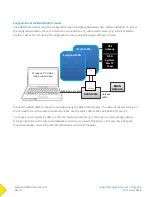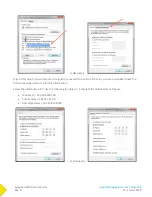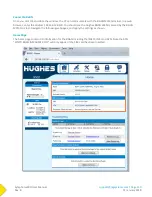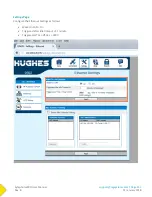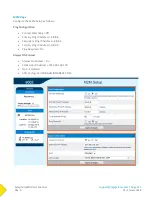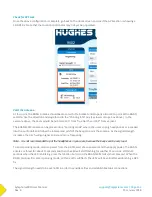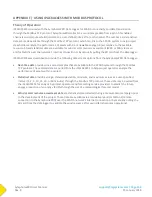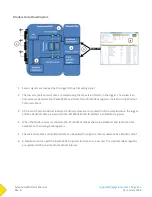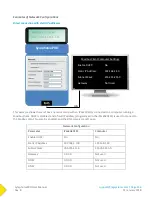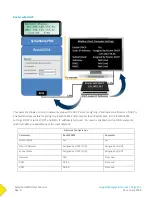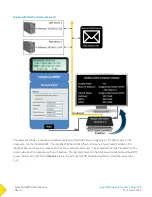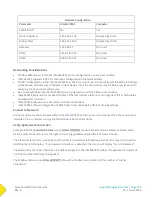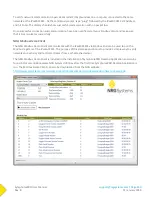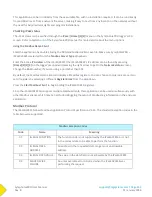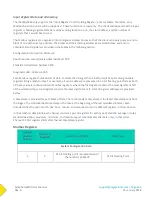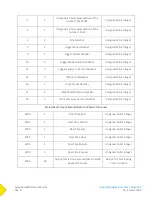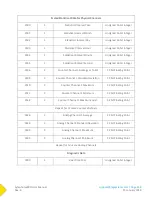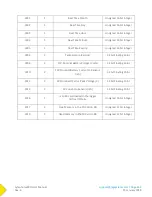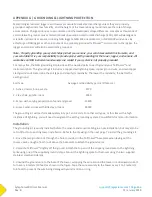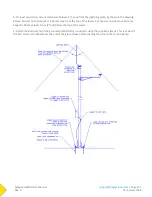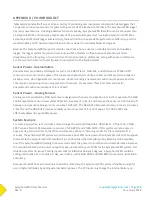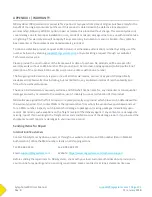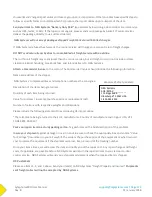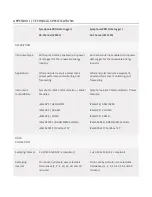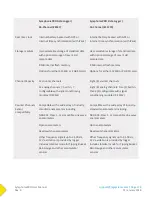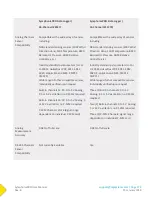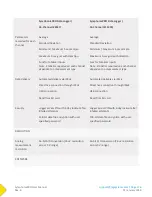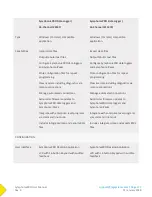
SymphoniePRO User Manual
Rev. 8
support@nrgsystems.com | Page 162
11 January 2018
Input Register Data and Addressing
The iPackACCESS only supports the “Input Register” and “Holding Register” primary tables. Therefore, only
Modbus function 3 and 4 will be supported. These functions are read-only. The client will request that the input
register or holding register table be read by sending function 3 or 4, the start address, and the number of
registers that it would like to read.
The Modbus registers are organized into contiguous address blocks, so that the client can easily query an entire
block of one particular type of data. The blocks and their starting addresses are listed below, and a more
complete list of registers is provided in the tables in the following section.
Configuration Information: Address 0
Real-time (one-second) scaled data: Address 1500
Statistical scaled data: Address 2500
Diagnostic data: Address 3000
Each Modbus register holds 16 bits of data. For data that is larger than 16 bits, it will be split among multiple
registers in big endian format. For example, all sensor data are represented in 32-bit floating point format. Each
of these values is contained in two Modbus registers, where the first register contains the most significant half
of the word and the second register contains the least significant half. A list of register addresses is provided
below.
A timestamp is provided for each block of data. The real-time data timestamp is the latest timestamp sent from
the logger. The statistical data timestamp is the time at the beginning of the last calculated interval. Each
timestamp has the year, month, day, hour, minute, and seconds stored in a different register in this sequence.
In the statistical data block, each channel contains a pair of registers for each type of statistic: average or total,
standard deviation, maximum, minimum, and maximum gust (anemometer channels only), in that order.
Channel 1’s first register starts after the last timestamp register.
Modbus Registers
Modbus
Register
Address
Number of
Registers
Description of Data
Data Type
System Configuration Data
0
2
32 bit Floating point representation of
the number 12345678
32 bit Floating Point
Summary of Contents for SymphoniePRO
Page 1: ......
Page 74: ...SymphoniePRO User Manual Rev 8 support nrgsystems com Page 74 11 January 2018 ...
Page 76: ...SymphoniePRO User Manual Rev 8 support nrgsystems com Page 76 11 January 2018 ...
Page 77: ...SymphoniePRO User Manual Rev 8 support nrgsystems com Page 77 11 January 2018 ...
Page 78: ...SymphoniePRO User Manual Rev 8 support nrgsystems com Page 78 11 January 2018 ...
Page 134: ...SymphoniePRO User Manual Rev 8 support nrgsystems com Page 134 11 January 2018 ...
Page 137: ...SymphoniePRO User Manual Rev 8 support nrgsystems com Page 137 11 January 2018 ...
Page 139: ...SymphoniePRO User Manual Rev 8 support nrgsystems com Page 139 11 January 2018 ...
Page 142: ...SymphoniePRO User Manual Rev 8 support nrgsystems com Page 142 11 January 2018 ...

